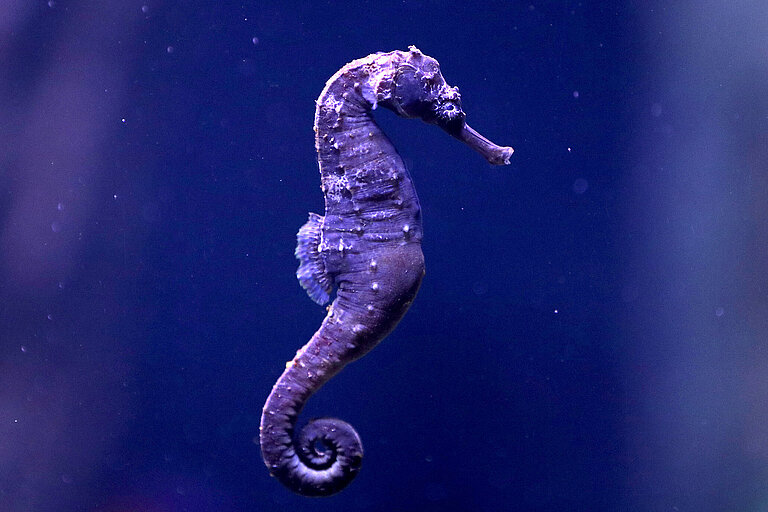Did you know?
Despite their unusual appearance, seahorses are fish. Around 130 different species are known worldwide with the smallest only being ca. 1.4 cm and the largest up to 35 cm. It is a remarkable fact that the male seahorses give birth. When mating, the female deposits her eggs into the male’s brood pouch, where they are fertilised. After ten to twelve days, the juveniles emerge.
Seahorses hardly have any predators. Their bodies are made up of bony plates, often armed with spines and their unique prehensile tails enable them to hold onto e.g., seagrass or coral, making them difficult to spot due to their quiet nature. To a certain degree, they can even change the colour of their bodies.
But many seahorses are threatened: fishing nets destroy the seagrass beds where they live. They die as by-catch, are dried as holiday souvenirs or are sold in China for supposedly enhancing virility.
Characteristics
| Family | Syngnathidae |
|---|---|
| Length | max. 19 cm |
Status according to Red List
More information you will get on the web page of the IUCN Red List.


